Smartwatches remain a bit of a niche product in Australia. Despite them offering so much, and striving to be as easy to use as possible, they’re still seen very much as optional purchases. Often, they’re quite expensive and this doesn’t help. Samsung’s Galaxy Watch is a more expensive wearable, but it does a lot, with a fairly straight-forward user interface. Will the price turn people away?
The watch platform used by Samsung isn’t new; it’s fundamentally the same as the Samsung Gear S3 and Gear Sport. The platform doesn’t feel like it’s changed a lot, but it’s wrapped up in a package that’s meant to draw your eyes (and your wallet) towards a purchase.
How’s the Samsung Galaxy Watch go?
There’s little doubt, this is Samsung’s best smartwatch by a country mile. They’ve learned a lot in particular from the Gear S3 and Gear Sport, and combined that into an appealing package that looks at home on your wrist. It works with iOS and Android, runs Samsung’s Tizen platform (which we’ll delve into a little more, below), and the battery easily lasts a couple of days.
In short, it can get you through a decent business trip, not make you look like a complete geek, and work with just about any phone you throw it at. Mostly.
On the downside, though, Samsung has packaged up a lot of what was already on the market and put it into a more expensive smartwatch. Some things are genuinely new – including Bixby in the watch, and a dual-core processor – but other things are old news. Fitness tracking is everyone’s game at the moment, and Samsung’s version of it is unremarkable.
How’s the design?
Design-wise, the Galaxy Watch was announced in two sizes and three colours. Our review unit is the 46mm stainless steel / silver version with black rubberised strap, and it’s also LTE enabled. More on that later.
While the Galaxy Watch’s features are great, it’s how it looks that caught my attention. This is a smartwatch that doesn’t look like a geeky smartwatch. It’s classy, minimalistic, and refined. Galaxy Watch looks like it would go equally well with weekend casual and weekday business, and I’ve had compliments on it in both situations.
At the same time, I wouldn’t describe the Galaxy Watch as overly elegant. It’s thick (at around 1cm), and though the front is glass and metal, the rear is plastic. You could wear it just about anywhere, but it feels more like a dress watch than something you’d comfortably wear to the gym, for a swim, or on a bushwalk. It’s definitely not a sports watch, even though it has the features you’d typically find in one.
What’s worth noting?
The display on Samsung’s Galaxy Watch is very nice, and sips away at the battery; you can leave it “always on” and still get two to three days battery use. However, on the flip side, it goes into a dim power saving mode when it detects you’re not actively using it, and it can be quite hard to wake it up. Other smartwatches respond promptly to gestures, yet with Samsung, I was waving my arm around frequently to turn it back on.
Though the Galaxy Watch features a bezel, it’s both the best and worst feature of the watch. Best, in that it’s a unique way of interacting with the watch and performing some common functions. For example, if your phone rings, rotate the bezel counter-clockwise to ignore the call or hang up. It’s also the worst, because it feels superfluous. Almost any action you can do with the bezel you can do by simply swiping on the touchscreen, and while it’s neat to rotate the bezel around your apps (for example) you still need to tap on the screen to launch one. That hasn’t changed in years.
For the core features, Samsung’s Galaxy Watch still does alright. You can accept or reject calls (or even take them, using your watch as a Bluetooth audio accessory), review messages, notifications etc, and in some cases, respond to notifications. However, Tizen shows up its notification limitations – Wear OS does a much better job of enabling interaction with notifications. Samsung Pay is great, if your bank supports it, but the Google Pay workflow on Wear OS is a little easier (and it supports more banks).
Unlike most wearables on the market, Samsung’s Galaxy Watch (like Samsung’s earlier watches) charges via wireless. There’s no pogo pins, no fiddling with cradles to make sure it charges. Simply sit the watch in the charger, and it works every time without fail. It’s one area that I really like about Samsung’s wearable products.
Does Samsung’s Galaxy Watch do enough?
Others have opined that the bar for smartwatches is a bit higher in 2018, and I can only agree. Samsung’s Galaxy Watch does enough to make it worthwhile, but it feels like it hasn’t added enough new features, or nailed enough of the existing ones, to justify its steep price.
Notifications work, as I’ve noted above, but need to be more actionable. I could – if I wanted – reply quite easily to an email using Wear OS. Tizen doesn’t really let you. Edge case, though, I admit. Yes, it tracks 39 kinds of workout, but at least 20 are just single-type exercises (e.g. planks and squats). Most smartwatches can track the rudimentary exercises (walking, running, cycling, etc) and so Samsung’s ability to do the same is less remarkable. 50 metres water resistant for 10 minutes is a pretty big claim, and for most people, probably irrelevant, but if you’re into (shallow) diving you’ll welcome leaving your watch on your wrist.
On the downside though it has a few issues, especially at the time of the review.
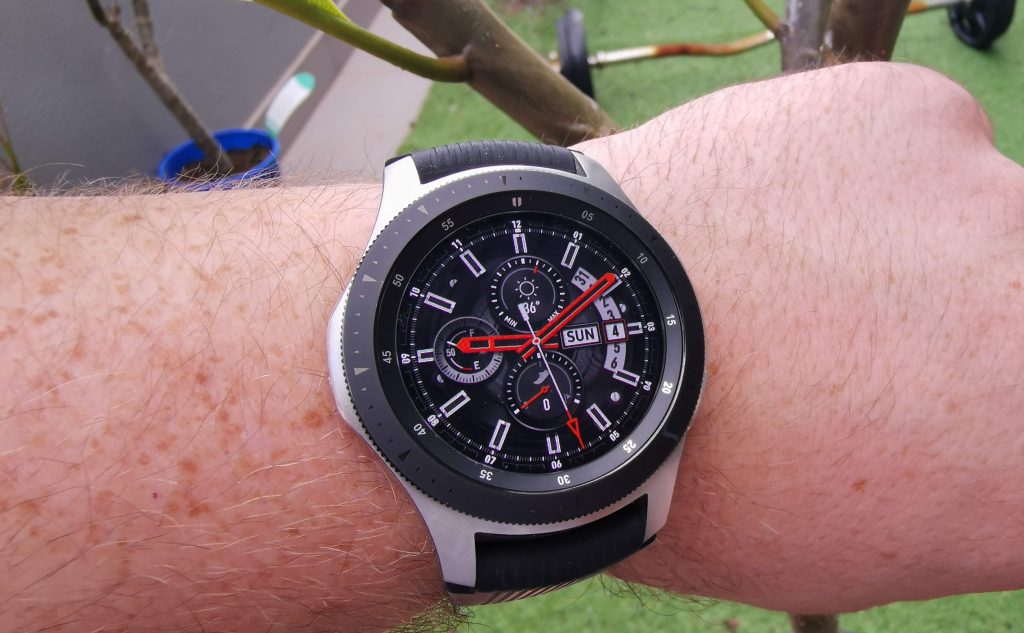
Should you buy one?
For starters, its Bluetooth range seems pretty inadequate. It often disconnects from my phone, whether its my personal phone, or the Note 9 supplied with the review unit. For another, it rarely wants to connect over WiFi despite setting it up many times. Wear OS has no issue with this.
The LTE variant is appealing, because it offers NumberSync between your compatible phone and watch. However, this is supported (for now) on only one of Australia’s carriers, and only on a compatible Samsung smartphone. Unless you’re on Telstra and use a relatively new Samsung handset, NumberSync won’t work, and thus the extra you spend on the LTE version is wasted.
We understand that this restriction in particular will be lifted going forward, but for a watch that’s on sale now, you’d not buy it for these features.
The reminder to get up and exercise is a welcome one, for those of us who too easily get stuck working at a desk for too long. However, it only suggests a “torso twist”, not something that might ultimately be more helpful, healthy or beneficial. I know that I need to get up and go for a walk, and it’d be nice for my watch to remind me of this, but torso twists is all it can do.
What we like
- Good design, looks at home with your business attire and weekend casual wear.
- Feels solid and comfortable; the rubberised watchband neither feels nor looks cheap.
- Great battery life – two to three days.
- LTE and GPS built-in.
What we don’t
- LTE requires Telstra (though Vodafone support is coming) and a compatible Samsung handset (though others may be supported soon). For now, it’s a niche feature.
- Notifications are good, but limited options to interact with them. Dismissing on the watch does not dismiss on your phone.
- Bluetooth range limited, frequently disconnects from the phone.
- Samsung’s Tizen needs a refresh. It works well, but the same interface from a few years ago with not much innovation leads to a bit of a tired experience.
Availability
Samsung’s recommended pricing starts at $549 for the 42mm Bluetooth version and $599 for the 46mm Bluetooth version, while the LTE 42mm will cost $649and the 46mm LTE will cost $699.
Disclosure Statement
Samsung's Galaxy Watch is a long-term review unit and will be retained in the office for general use.

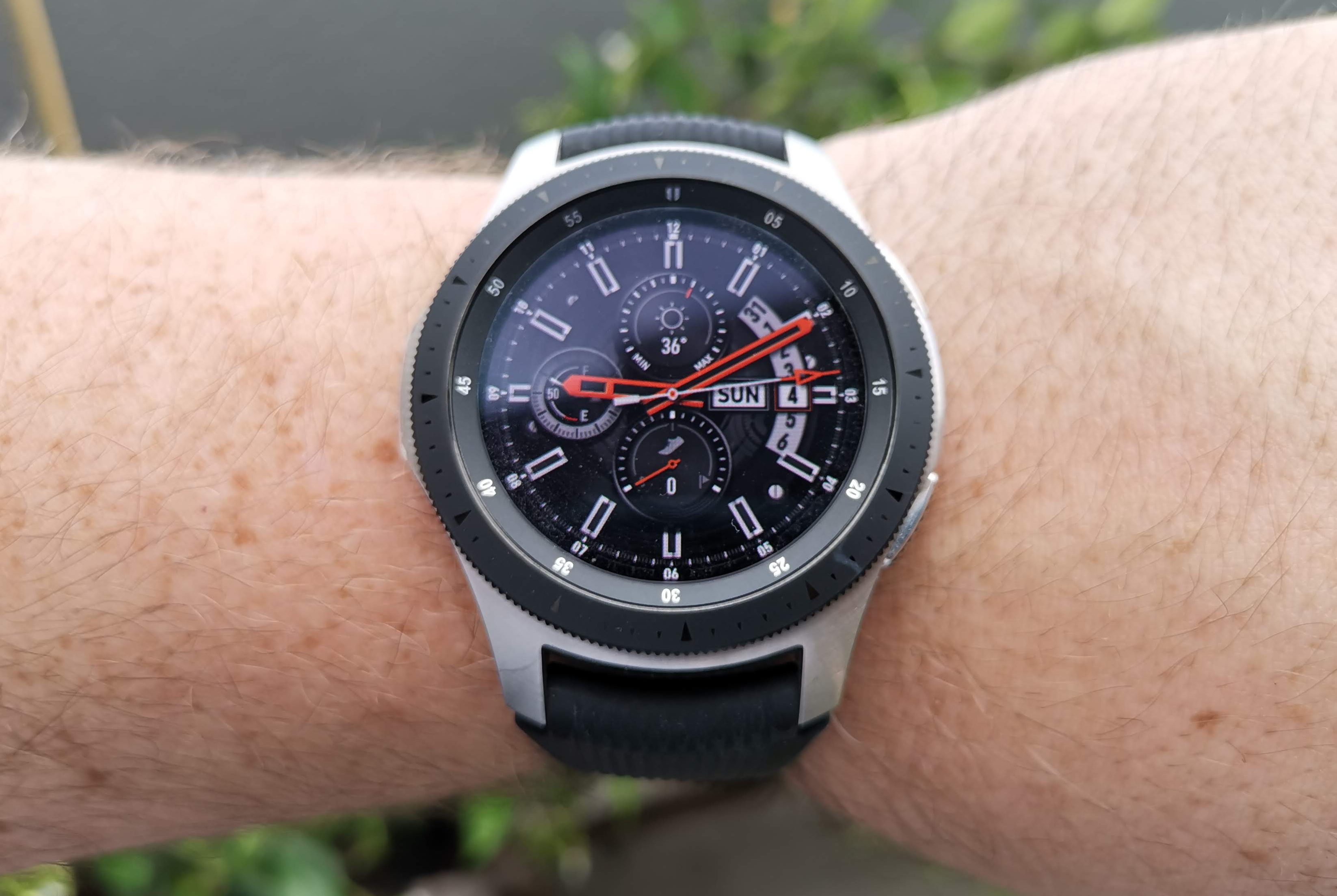
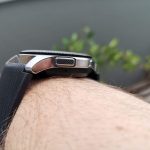
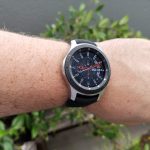


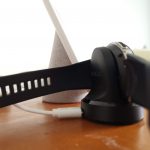



“Samsung is a generalist watch when it sounds like you’re after something more specialised.”
Samsung would be an ideal watch for me if all features worked *as advertised*. Why is it so hard to get the two *basic* functions right: Heart rate monitoring and step counting? I expect *any* device that purports to be a fitness tracker to get (at least) those two functions right. If my $30 Xiaomi Mi Band can do it, so should a $699 Samsung watch!
First time owner of a smart watch: have a 4G version since the release day. Heart rate monitoring and step counting are unreliable. During intense gym training (circuit training) heart rate monitoring stops working for long periods. Step counting shows less steps than my Xiaomi Mi Band 2. Unreliable sleep tracking. There are numerous posts in Samsung support forums about the said issues. Visiting a Samsung store in Melbourne Central was a waste of time: they did not *officially* even acknowledge the issues. Off the record, service manager admitted that Samsung is aware of the issues and hopes they’ll be… Read more »
If you’re more into the fitness side of a wearable, ditch Samsung and get something designed for that – Garmin, Fitbit, etc. Samsung is a generalist watch when it sounds like you’re after something more specialised.
if there is a google assist work around i would buy it in mins, currently there is only alexa work around atm.
Sadly I have my doubts that’ll ever happen.
Because you can’t easily do typing on a watch, you need a good digital assistant to take your commands. But this watch has no Google Assistant. Instead you’re stuck with Bixby.
Exactly right and Bixby is terrible